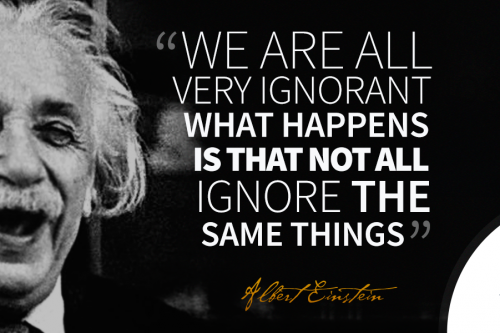New people, new proceedings, new clients. The reasons why organizations undertake training processes are many and very diverse.
This is why we are certain that for the question: “What is the best option for my company: online training or offline training?” There’s only one answer: it depends.
Ok, that’s not the answer you were looking for. The truth is there are many variables to take into consideration regarding each particular case. Just to name a few:
- Objectives: What does your organization want to achieve with the training process? For how long?
- Budget: How much money do you count with?
- Audience: Who will receive the courses? How old will they be? Are they going to be clients or employees?
- Resources: Do you have your own training venue/classroom? Do you have a technical team or person assigned to your training project? When should the training start?
- Results: How are you going to measure your success?
You need to have answers to all these questions before you start evaluating training options. Your organization needs and goals are your real guidelines to define what is better for you.
Once you know your organization objectives and what resources you count with, it is time to compare options. Here, we are going to help you compare online training vs traditional classroom training.
In order to make this comparison possible, we are going to focus on this five aspects: logistics, costs, audience, tradition and organizational culture & structure.
Logistics
Organizing a course or workshop for a group of people requires a logistics work, even if the group is small.
You need to find a date when the instructor, the venue, and the attendees are available. This is not always an easy task and in many cases, some might be disappointed. And of course, don’t forget about the coffee break: find some food everybody enjoys.
Learning through an eLearning platform is completely different. In this scenario, you only need to upload all your courses to your platform once and use them as it’s needed.
Therefore, assigning courses to students is easy. Meanwhile, students will be able to access the content anytime and anywhere.
What you need to know
These are the questions you need to find an answer regarding the logistics of your training program:
- Quantity of people to be trained. Are they going to be tens, hundreds or thousands? Is this process going to repeat over time? Maybe right now you only need to train 10 people, but if you’re going to be doing it monthly, it changes the whole scenario.
- Location of the people to be trained. Are all the people to be trained in the same city/building/office?
- Schedules and work styles of the people to be trained. Is administrative or operational staff? Are they visiting clients constantly or are they more in-the-office people?
Costs
In our eLearning myths post, we talked about a research that showed how virtual education has helped organizations save between 40% and 60% of training costs when they recur to online training.
Offline training is expensive because there are many factors added to the final bill: instructor fees, venue fees, transportation fees and so on. The worst of all is that you pay for this every single time you have people to train.
Additionally, you need to add to the list people’s opportunity cost. When people goes to the training session, they stop doing their job. So maybe a seller would have to delay a meeting with a potential client in order to assist the training.
On the other hand, the savings coming from an eLearning platform directly depends on of the resources you have and your needs.
For example, Moodle is a free and open-source software eLearning platform. Yes, it is really free. But there is a hidden cost. To make it work, you’re going to need a technically skilled person to manage the system.
Another option to create a distance learning program for your organization is a cloud LMS (Learning Management System). These systems don’t require an installation process and you only need to pay a monthly fee to keep them working. You can check more about cloud LMS features at our Teachlr Organizations page.
What you need to know
If you think you can reduce costs of your training program with eLearning, think about this:
- Does training repeat over time? For example: induction and onboarding, compliance and industry updates, etc.
- Do you have a venue/classroom for the training sessions?
- Instructors and students are located in the same city? Do you need to pay for transportation? Where are students located?
- Do you count with an IT department/person to manage an online training system? Who would be in charge of working with the eLearning platform: someone technical skilled or someone more HR like?
Audience
We all know what to expect from a traditional classroom training: you go there, listen to the instructor for a few hours, maybe you make a comment or two, and you’re done. That’s easy.
The story is not the same for online training. Whichever choice you make people will have to learn how to use the eLearning platform.
Then, if people receiving the training is not used to digital environments, either by age or any other reason, maybe offline training is the best option for you.
Nevertheless, LMS platforms have evolved to be simple and easy to use for everyone: the ones managing the system, the ones creating courses and the ones taking courses. So, if these platforms help you achieve your training program objectives do not discard them at first sight, do a little research and find out how they work.
What you need to know
There’s only room for one question:
- Who is going to receive the training? From this question, you can learn: how do these persons feel about technology? Are they going to be happy with their own virtual learning space?
Tradition
“This is how things have always been done”. That’s something that people working for a change hears a lot.
And yet, in this case, that phrase is very real. The word “always” goes beyond the learning process within the organization, classroom training is how learning is done in college, in school, etc. But that learning has been done in classrooms for the last century doesn’t mean that it is the best way to do it.
A review commissioned by the World Health Organization and carried out by the Imperial College of London showed that eLearning is as good as or better than traditional training in terms of acquiring new knowledge for health professionals.
Each one of the methods has its own benefits. It is true that live interaction is lost in an eLearning program, but people gains the ability to learn at their own pace and focus on what is most important for them.
Additionally, with eLearning people can revisit the lessons and courses every time they want. Have you ever seen people asking an instructor for their slides at the end of a course or workshop? Well, in an eLearning platform people don’t only have the slides, they have the whole course.
What you need to know
Tradition can be challenged with the right arguments. These questions are going to help you decide if eLearning is right for you:
- Is there any training or practical exercise that is going to be diminished in a virtual environment?
- How are going to be measured the training results? Is there any evaluation at the end of the training? Would you like to have a tool that allows you to evaluate and see people’s achievements?
- Would it be easy for people to learn in a virtual environment?
Culture and Structure
As mentioned earlier in this post, the particular characteristics of your organization will have a great weight to determine where the balance is tilted.
If your organization is small, it is probable that the easiest way to train your people is the offline method. In this case, costs are not so high and by making people come together to learn something, you will create a place to exchange ideas.
On the other hand, if your organization is big or you have offices in different cities, an eLearning platform will offer you benefits regarding costs and logistics.
Online training environments are usually associated with isolation and lack of interaction. But, depending on how they’re used, they can be a source of inspiration for learning just for the pleasure of it.
What you need to know
- Organizational culture is a very important aspect to take into account when deciding the best way of training for your organization:
- Does your organization promote employee independence and proactivity?
- Is people motivated to learn new things?
- Does people has a high sense of responsibility and are motivated to achieve the goals set for them?
- What size is your organization? (number of people, number of cities, etc.)
Your turn
Define clearly the objectives of your training process and find out which are the bottleneck factor in your decision-making process.
With this in mind, check out the comparison between online and offline training, and answer the questions we raised.
Choose the best option for your organization.
If you still have doubts or are there any technical aspects you would like to go deep, write us at info@teachlr.com. We will contact you with or the information you need.
What do you think? Is there anything we missed? Write us in the comments.




